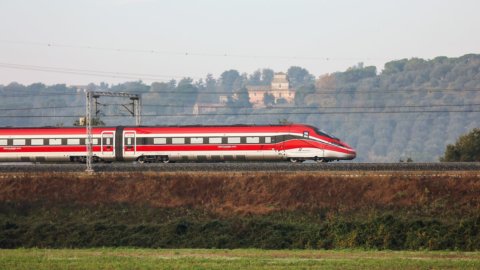The anti-Covid rules on public transport become stricter. On Monday, the ministers of health and transport, Roberto Speranza and Enrico Giovannini, signed an ordinance introducing a squeeze on buses, trains and taxis. Here are the main news.
TRAINS
If there is a passenger on board a train with symptoms attributable to Covid, the health authorities and the railway police can stop the train, wherever it is. "After the relative assessment of the passenger's health conditions - reads the ordinance - it is up to them to decide whether to stop the train to proceed with an intervention or to provide special dedicated spaces". The railway company will then have the task of "subsequently proceeding with the specific sanitization of the train" before putting it back into operation.
In large stations - Rome Termini, central Milan, Florence Santa Maria Novella - the Green Pass will preferably be checked on the ground, not on the train (even if further checks on board the trains are still possible).
TAXI AND NCC
Regardless of the size of the vehicle, a maximum of two people can sit in the back seats of taxis and NCCs, unless they are from the same family.
BUS
Finally, as far as buses are concerned, instead there is a sign of easing: you can go back to the ticket agent on board and get on through the front door, provided that the driver is protected by a partition. However, it is necessary "to allow passengers to get on and off from the central door and from the rear door using suitable waiting times in order to avoid contact between those who get off and those who get on".
SHIPS AND CARGO TRANSPORT
As far as ships and ferries are concerned, the ordinance prescribes "to avoid as much as possible contact between ground staff and on-board staff" and recommends "the interpersonal distance of at least one metre". The mask remains mandatory "for staff and passengers".
Finally, in freight transport, drivers without a mask must remain on board. If, on the other hand, they get off and come into contact with other operators, they must wear a mask.





